Who doesn’t love the taste of salty, crunchy dill pickles? Sliced on sandwiches, diced and spiced as tasty relish, or simply eaten as is these delicious lacto-fermented dill pickles have a flavor to die for!
Today we’re showing you how to make pickles – the old fashioned way.
We love this dill pickle recipe and think you will too. Check out the full video and subscribe to our YouTube channel. We appreciate your support!
How to Make Pickles 🥒
Today most pickles you buy at the store are made by the conventional pickling process as opposed to lacto-fermentation. This involves taking filtered vinegar, adding things like garlic and spices, and then bringing it to a boil to sterilize everything and finally pouring it over pickling cucumbers. The cucumbers then become “pickled” over time as the salty and acidic liquid do its work on the cucumbers as more of a chemical process.
These vinegar style pickles do taste good but are now sterilized. So basically everything in the jar is dead. The way we’re showing you today brings your food to life as an active culture.
How to Make Lacto-Fermented Pickles 🥒
In the process of lacto-fermentation, we’re taking pickling cucumbers, adding herbs and spices, and simply pouring a salt brine over the cucumbers. The natural bacteria and yeast that live on and in the cucumbers start consuming the sugars that are present and rapidly multiply.
When you leave food such as cucumbers out in the air for long periods of time, nature has designed oxygen-loving mold to grow on the cucumbers to break them down. In lacto-fermentation, we’re submerging our cucumbers under a salt brine which locks them into a low-oxygen environment so mold doesn’t grow. In addition, the higher salinity of the salt brine discourages bad bacteria that might still survive.
What we’re doing is creating an environment for anaerobic fermentation. Good bacteria and yeasts multiply and begin to balance out into a strong, stable culture. During the process where bacteria and yeast eat the sugars, they release acetic acid into the brine which lowers the pH basically creating what you would think of as vinegar. It’s technically not vinegar, but acetic acid. When you taste it though, you’d still think of the flavor profile as vinegary.
Let’s get into this naturally fermented pickle recipe! Stay tuned toward the end for spicy pickles! 🔥
Lactofermented Dill Pickle Recipe (Half Sour Pickles)
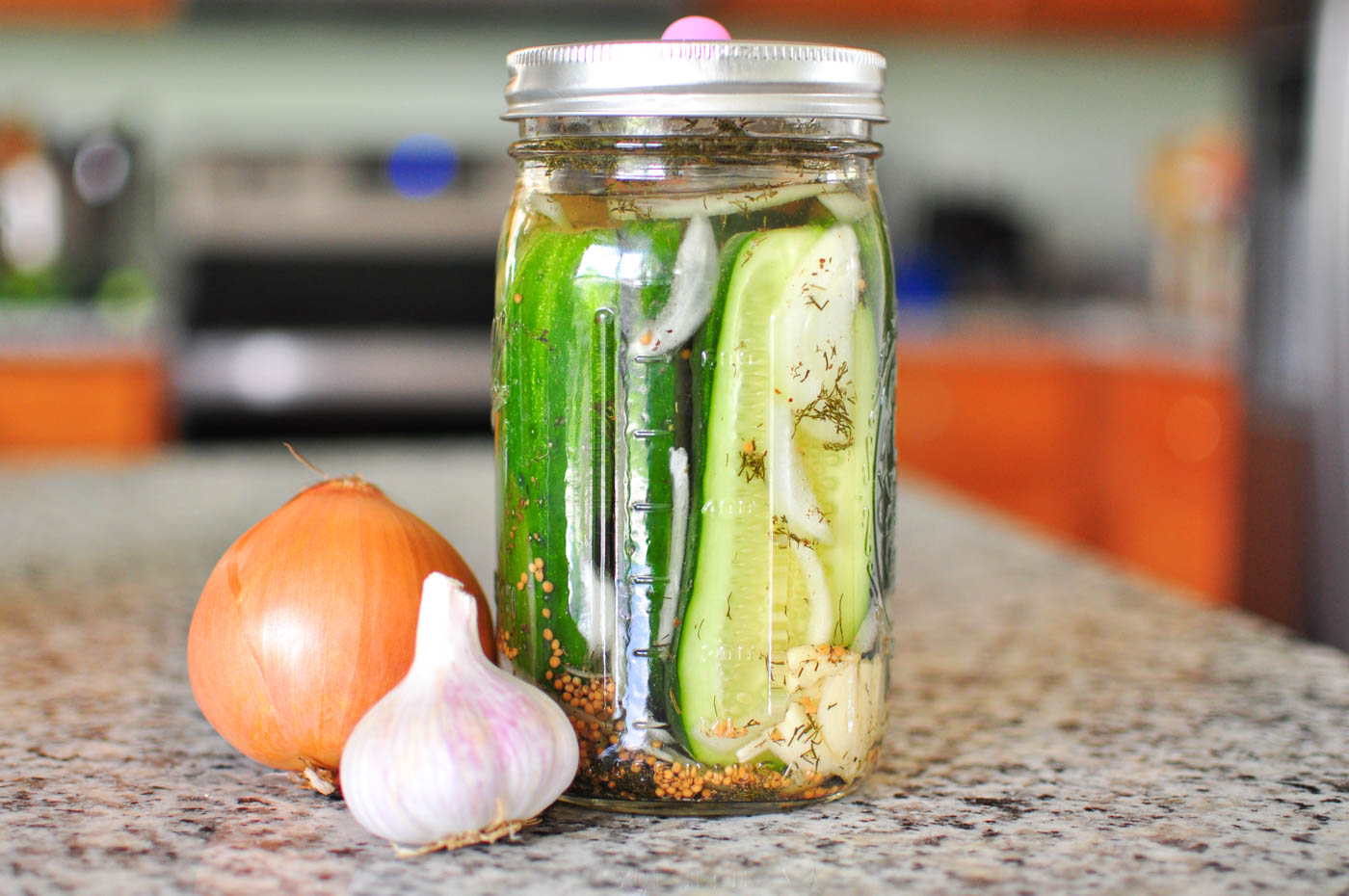
Makes 1 Quart
Equipment:
- 1 quart Mason Jar
- Wide-mouth leak-proof mason jar lids – for shaking up the jar without leaking
- Fermentation weight <– We love these!
- Fermentation lid <– These silicone lids work well for us
Ingredients:
- 1 pound of pickling cucumbers (about 4+ medium cucumbers)
- 1/4 onion, sliced
- 4 garlic cloves, smashed (or 2 tsp dried minced)
- Salt brine: Non-chlorinated water + sea salt to taste (we use 2 tsp. to 1 cup water ratio)
Pickling Spice Recipe:
- 1/2 T. dried dill, or 1 T fresh dill
- 1 tsp. mustard seeds
- 1 tsp. black peppercorns (or dash of ground pepper)
- 1/4 tsp. celery seeds (optional)
Add pickling spice ingredients to the bottom of the jar.
Slice onions and smash garlic. We like to add the garlic and half of the onions to the bottom of the jar and the rest in between the cucumbers to make sure they’re everywhere in the jar.
Slice cucumbers in half lengthwise and fit as many as you can into the jar. You can leave the pickling cukes whole, but can fit more slicing them. You also might need to cut the last one to get as much in the jar as you can. Leave room at the top for a fermentation weight.
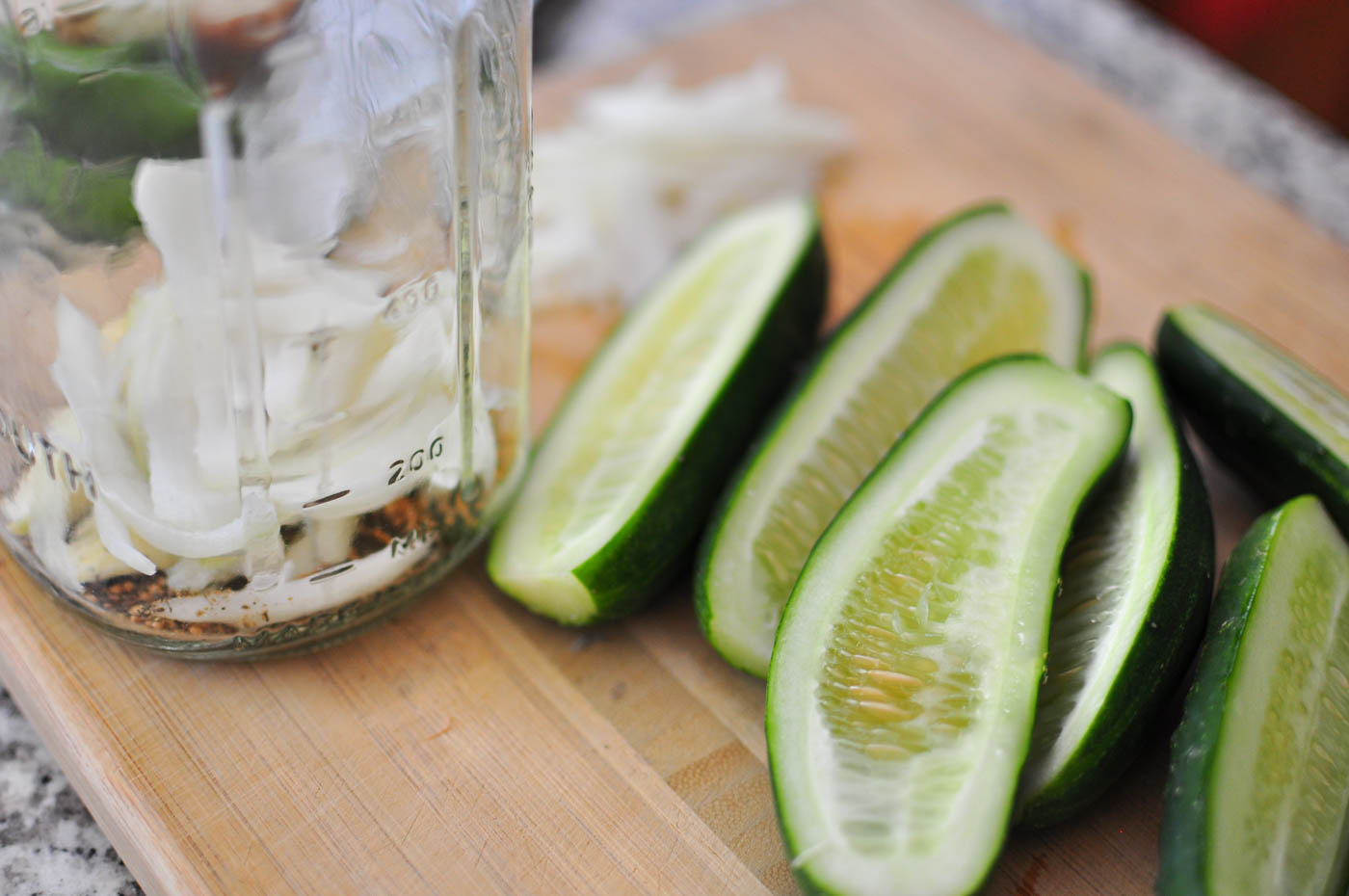
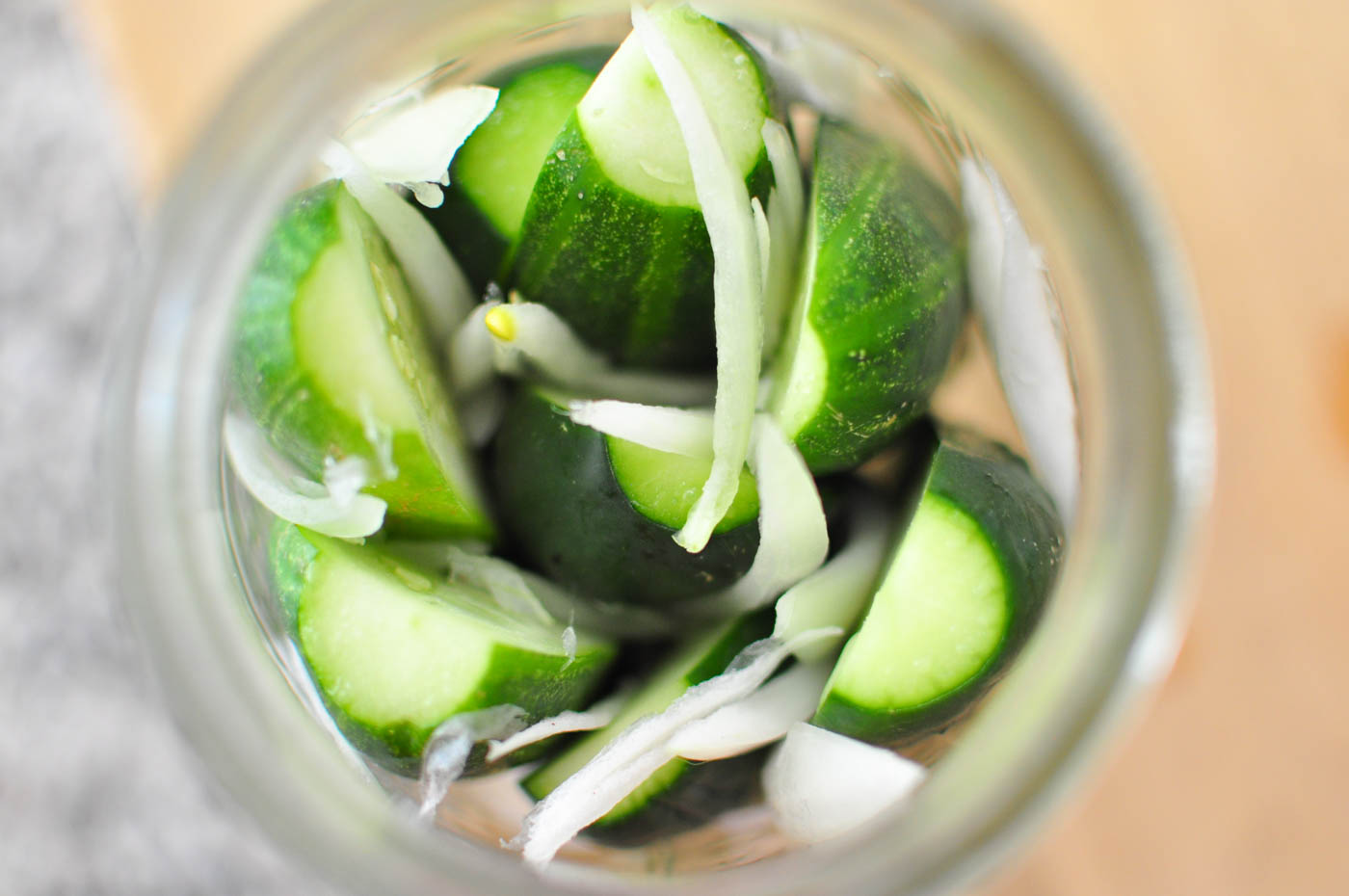
Mix up your salt brine to taste. We like two teaspoons of salt to one cup of non-chlorinated water, but feel free to use less or more.
Screw on a tight lid and give the jar a good shake to distribute everything around for a nice flavor.
Unscrew the lid and put in your fermentation weight and add brine if needed to bring the water level halfway up the weight. We’ve also used a smaller jelly jar that fits in the wide mouth mason jars. Cap with a fermentation lid and you’re ready to ferment!
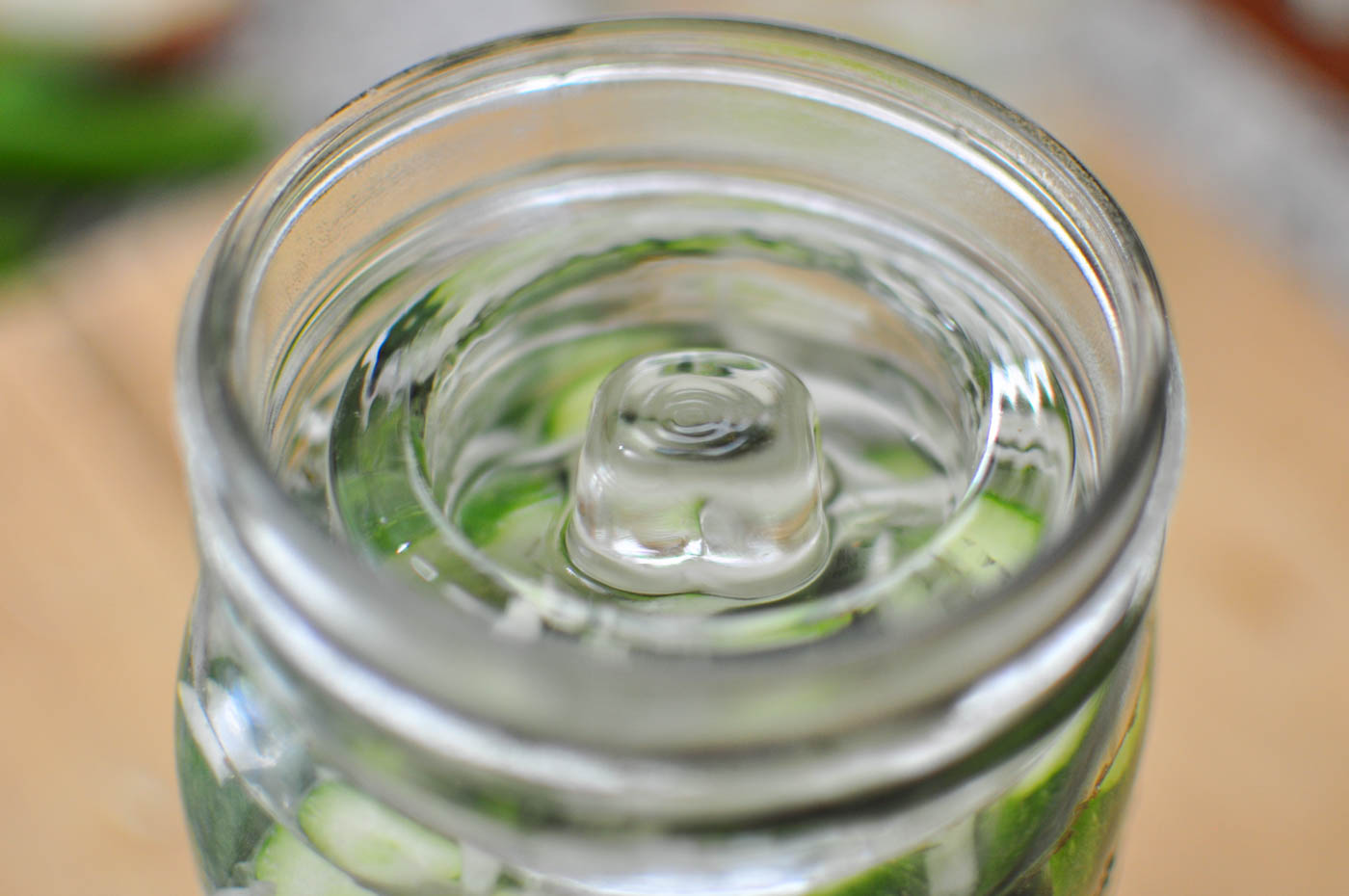
Ferment at room temperature for 3 to 7 days. Since we like “half sour” pickles, we like to ferment for 3 days. If you’d prefer “full sour” pickles, leave for longer.
What to Expect During Fermentation – Half Sour Pickles
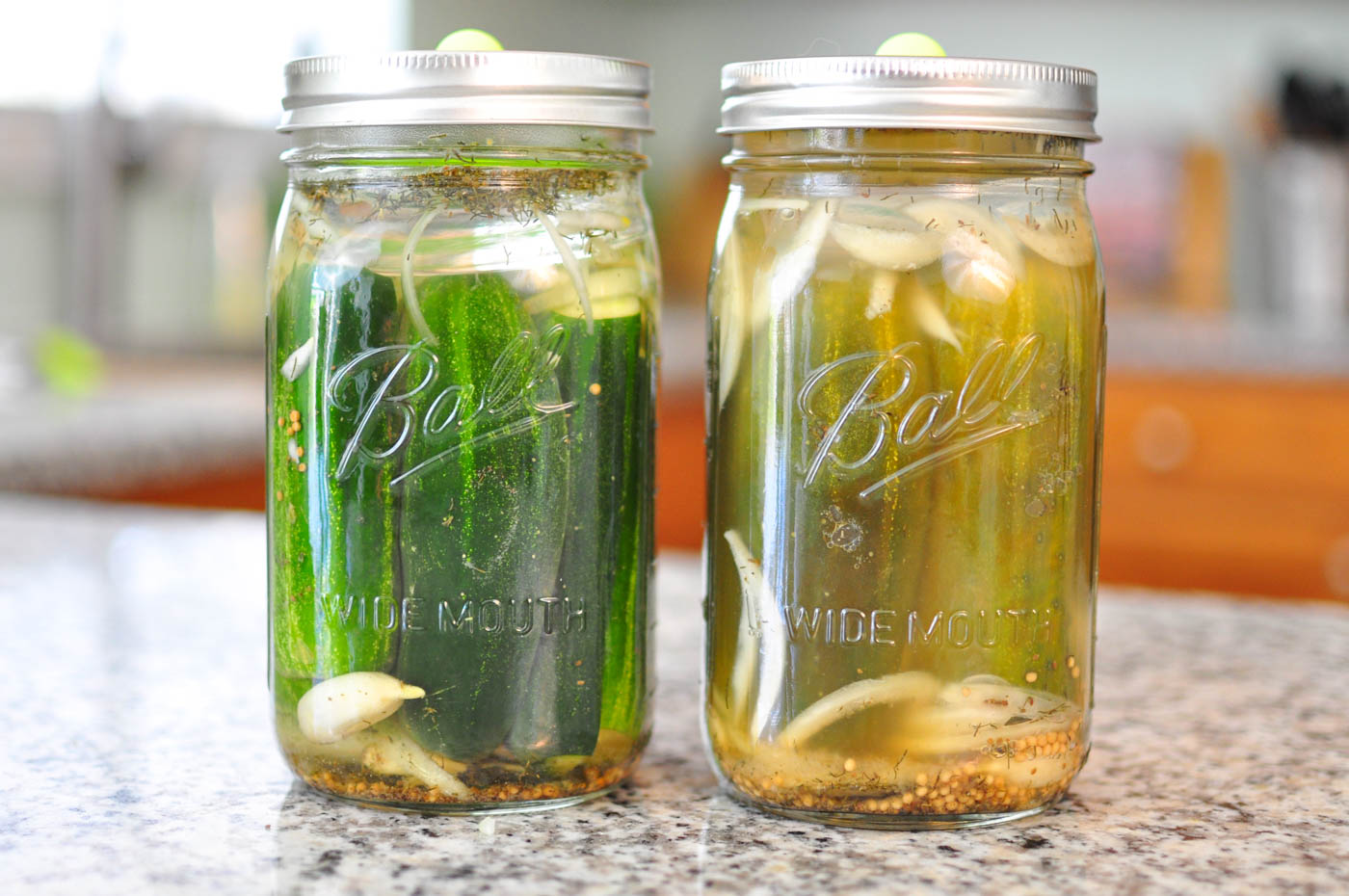
On the first day your jar of dill pickles will look clear and bright in color. You probably won’t notice much difference but could possibly see a few small bubbles appearing.
By day two of fermentation, you might start noticing the liquid in the jar could be turning slightly cloudy and you’ll probably start seeing tiny bubbles forming when you shake the jar. If you give the top a smell, it will also start to smell delicious with a vinegary dill aroma.
By day three, the jar should be noticeably more cloudy and the cucumbers will start to pale in color. You’ll probably still be seeing bubbles forming and see them race to the top when you shake the jar. At the bottom of the jar you’ll also start to see some white settlement at the bottom which is totally normal.
At this stage you will have half sour pickles and can transfer the jar to the refrigerator. Be sure to taste them at this stage to see if you like the sourness. If they’re not sour enough, you can let them ferment a bit longer.
One thing to note is that the cucumbers should still be fairly crispy and some of the flavor won’t penetrate the cucumbers until a couple weeks resting in the refrigerator. At that point they should taste perfect.
🌶️ Spicy Dill Pickle Recipe (Fermented Spicy Pickles)
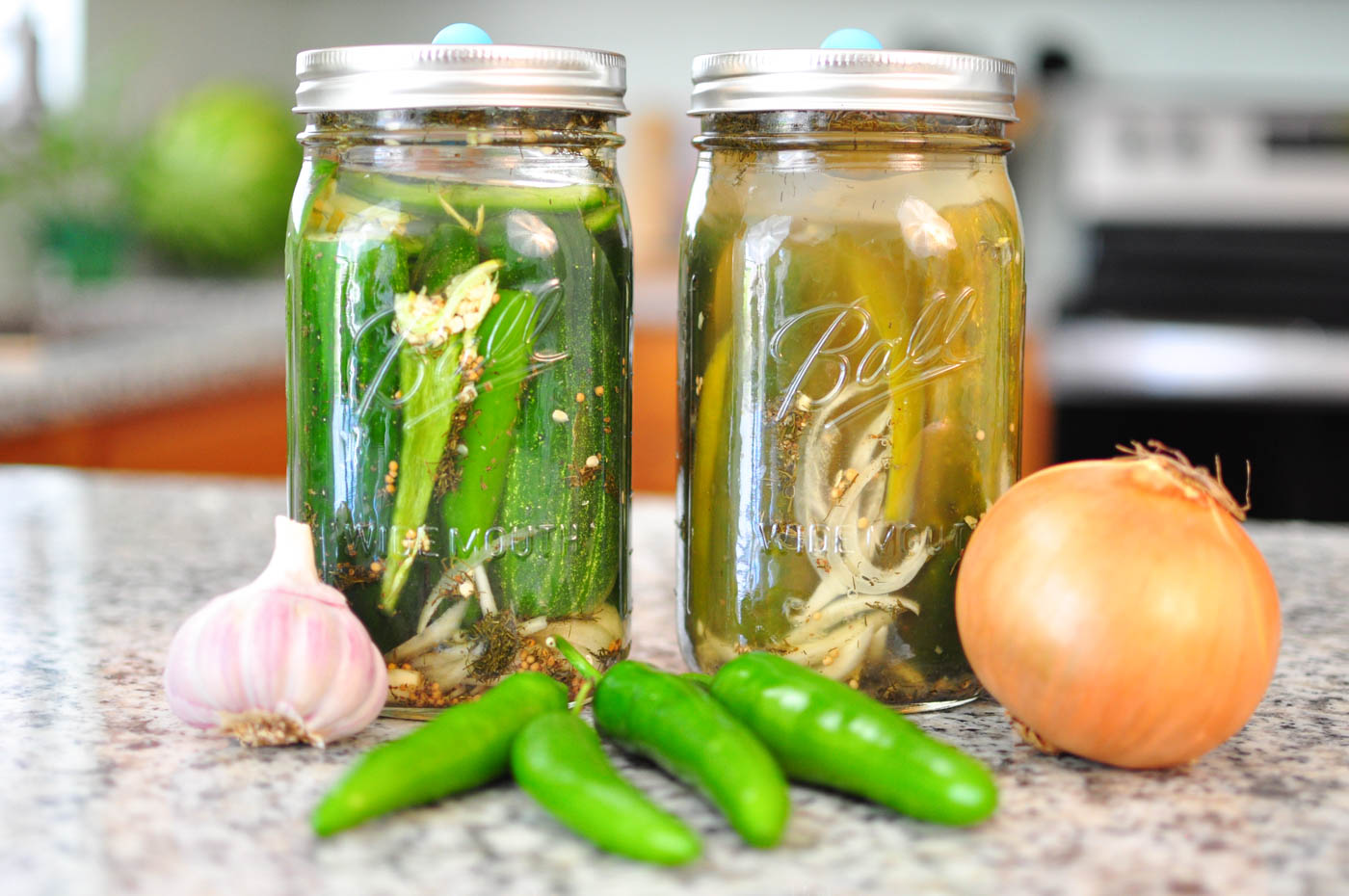
You say you want to kick up the heat a notch or two? Take the above recipe and add any number of the following to the above 1 quart recipe.
Low-Medium Spicy:
- Jalapeno Peppers – we like 2-4 jalapenos, sliced lengthwise (some are spicier than others, you can lower the heat by removing the white pith and seeds)
- Crushed Red Pepper – we like 1/2 to 1 tsp. dried
Medium-Hot Spicy:
- Serrano Peppers – we add 2-4
- Habaneros – add as many as you’re comfortable with but these can get very hot
Keep in mind to wear gloves when you’re cutting any of these peppers! If you chop these and touch anything, you will be on fire. You’ve been warned!
How to Keep Pickles Crunchy

Here are a few tips for making crispy pickles. We’ve had issues in the past where cucumbers ended up getting soft. No one likes a mushy pickle so here are some things you can try to keep pickles crunchy:
- Use smaller, harder pickling cucumbers with the noticeable little bumps (try different varieties)
- Soak cucumbers in ice water bath for a couple hours before fermenting
- Cut off the blossom ends – these tend to go soft first
- Use your cucumbers as soon as possible to make sure they’re fresh
- Add bay leaves, grape leaves, or oak leaves to the jar – tannins are supposed to keep pickles crunchy
Homemade Pickles – Try It Out!
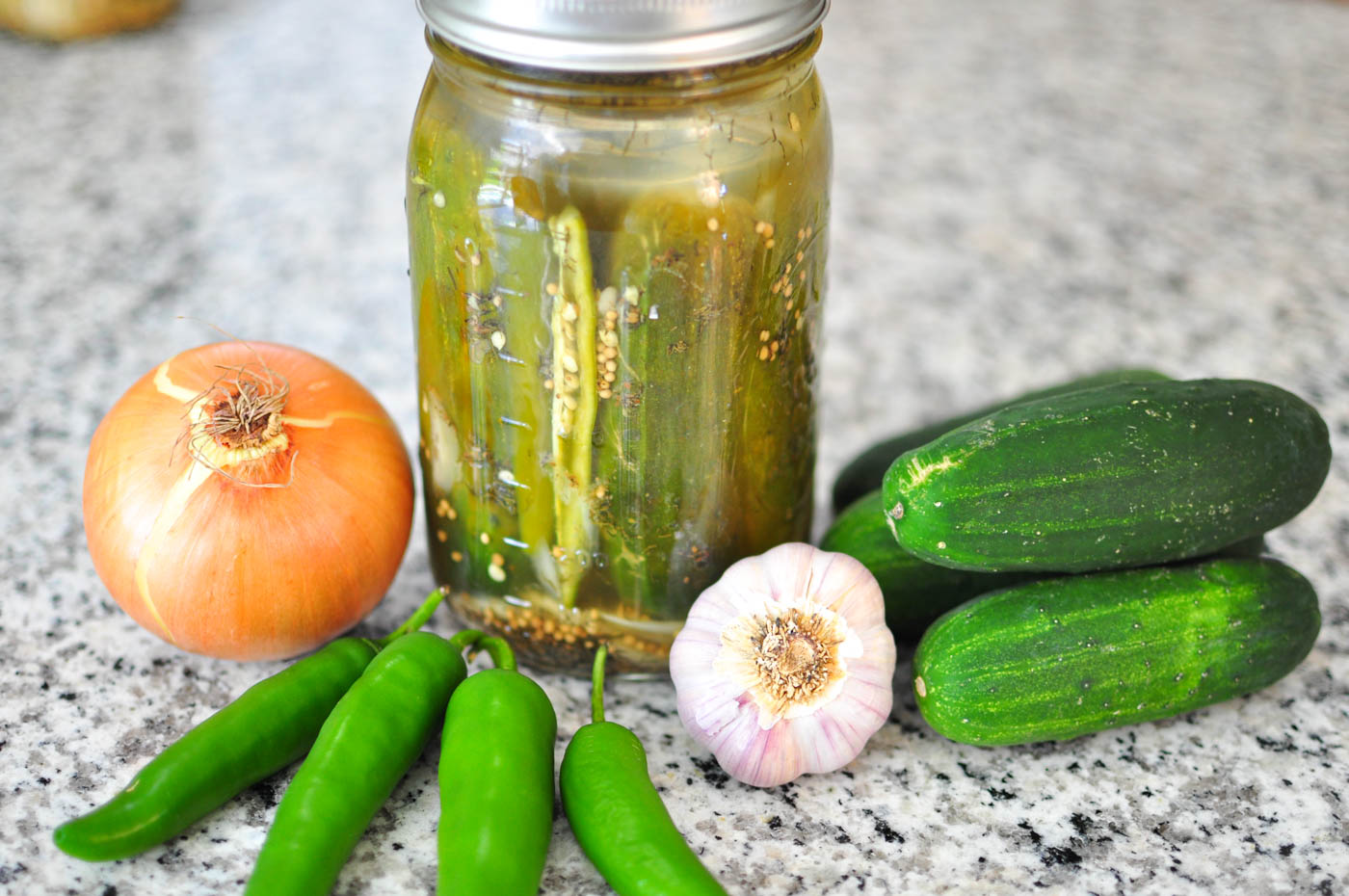
There you have it! You now have everything you need. Go get some cucumbers and get to fermenting!
Instead of getting your pickles from the store, take a stab at trying to make some yourself! At the very least, you’ll be delighted by the different flavor that homemade pickles have. Mix up the ingredients and add different spices that might make them more interesting. Let us know how it goes.
We hope you’ve enjoyed this episode on how to make homemade pickles using lacto-fermentation. Leave us a comment below and don’t forget to subscribe to our YouTube channel!

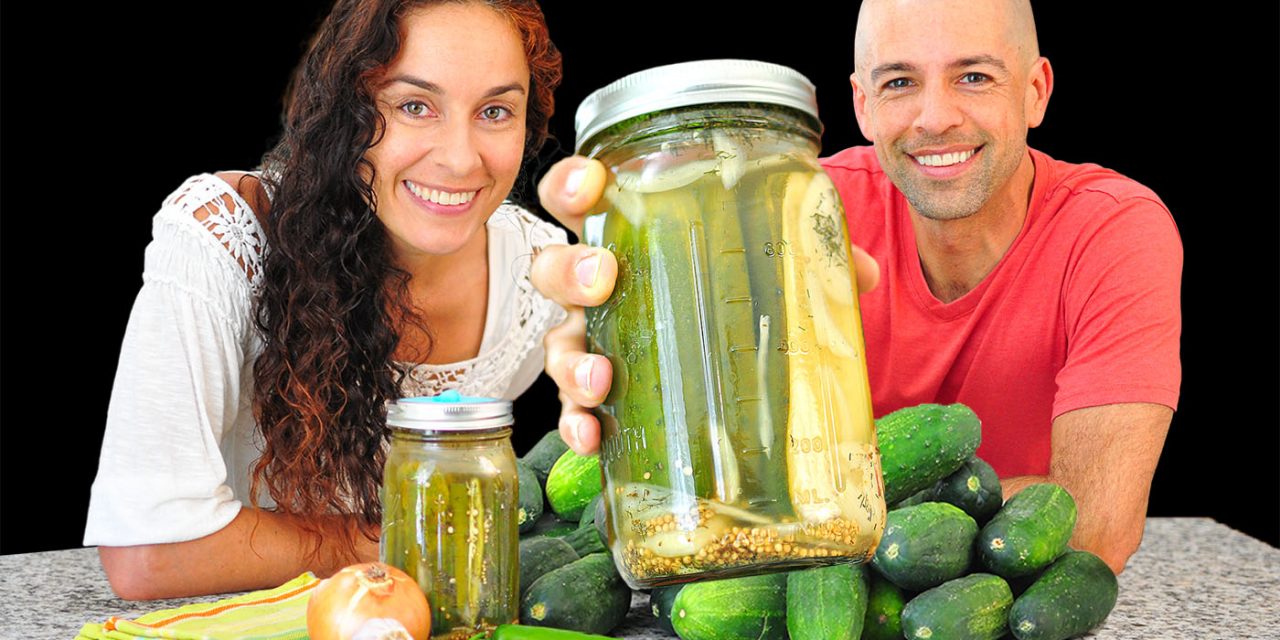
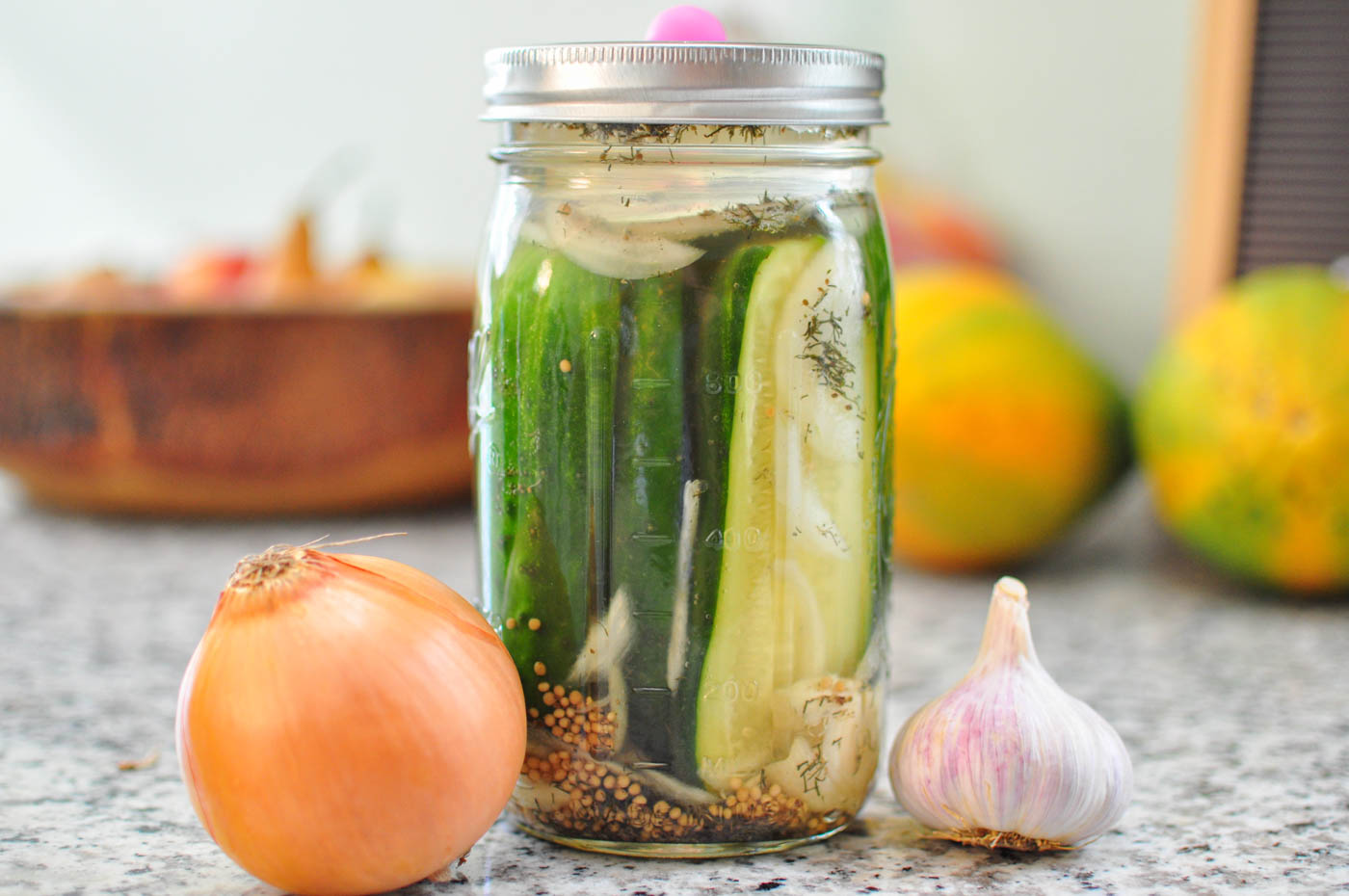
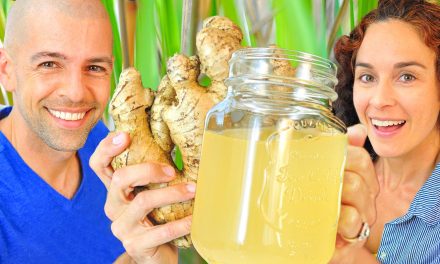


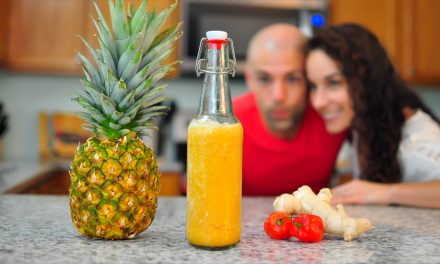


I Just LOVE your videos and of coarse the ability to print the recipes. Been Fermenting since last Dec and just love it. I was wondering have you done any videos on fermenting Rhubarb or Purslane. I really love purslane as a salad.
Thanks so much for the kind words Greg! 🙂 So far we’ve only fermented rhubarb in one of our previous videos on Fermented Blueberry Rhubarb Soda. If you like rhubarb and blueberries you will LOVE that recipe. We haven’t tried purslane yet but I’d bet packing a jar with purslane, onion, garlic, and some herbs and spices with a salt water brine would probably be very good. If you make it, let us know how it goes!
I lovethis recipe! A few of mine were soft,,,i dont know why, i used bay leaf and icesoaked fresh picked cucs. I fermemted 6 days? To long?
Do you have a recipe for poblano andsweet red bell peppers
That happens sometimes with some of them being soft. 6 days would definitely make it more likely to be soft though. The smaller cucumbers seem to stay crunchy also. That sounds like a good recipe idea for the peppers! I’d try the pickle recipe maybe without the dill.